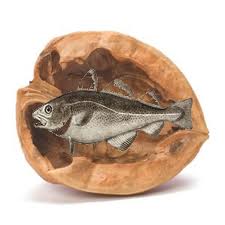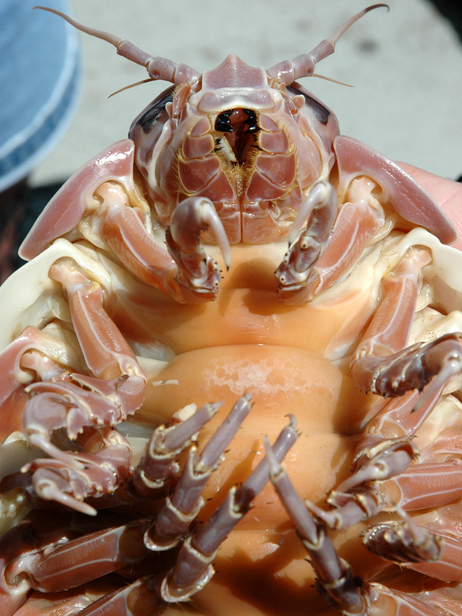Meshes and Microns: The Measurements of Water Treatment
by Gene Franks

Water News in a Nutshell.
The water treatment industry measures size in microns and mesh. This article puts these concepts into the context of the world we live in.
So much attention is given to the materials of water filter media (coconut shell vs. standard bituminous filter carbon, for example) that the size measurements of filter media are often ignored. Size, however, is very important in water filters. Filter media are usually manufactured substances that are ground to a specific size. The “grind,” usually expressed as a mesh size, greatly affects the performance of the filter.
In large tank-style filters, the general rule is that the smaller the granules of filter media, the more effective the filter will be at reducing contaminants, but the greater the restriction it will offer to the flow of water. Performance must be weighed against flow rate. A filter is of no value if water won’t go through it, nor is it of value if it’s so porous that it won’t remove the targeted contaminant.
The size of the particles in granular filter media is usually expressed as mesh size. Mesh refers to the number of holes or openings per inch in a testing sieve. A 12 mesh screen has 12 holes per inch. A 40 mesh screen has 40 much smaller openings per inch.![micron-mesh1[1]](http://purewatergazette.net/blog/wp-content/uploads/2013/02/micron-mesh11.gif)
Filter media is usually described with a two number designation. Twelve by 40 mesh filter carbon is a common size. If filter carbon is said to be 12 X 40 mesh, it means that the granules of carbon will fall through a screen with 12 holes per inch but be caught by a screen with 40 holes per inch. (Since nothing is perfect, some allowance is made for a small percentage of granules to be outside the size range. The undersized particles that wash out of the filter when water first goes through it are called “fines.” Over-sized chunks are called “overs.”) Eight by 30 mesh carbon is a courser blend than 12 X 40 carbon. It will fall through an 8-mesh screen but be retained by a 30-mesh screen. Water goes through 8 X 30 carbon faster, but for many jobs it is less effective.
In general, the larger the mesh number, the smaller the granules.
The familiar term “granular activated carbon,” or GAC, is used to describe most granular carbon. The technical definition of GAC is carbon of which 90% is retained by an 80 mesh screen. Finer-ground carbon, often compressed into carbon block filters, is called powdered activated carbon. Powdered activated carbon is in the 80 X 325 mesh neighborhood. Powdered carbon is more effective than GAC, but it is much more restrictive.
Microns
As things get tinier, filter makers usually switch to another measurement, the micron.
Here’s the Wikipedia definition: A micrometer or micron , the symbol for which is µm, is one millionth of a meter. It can be written in scientific notation as 1×10−6 m, meaning 1⁄1000000 m. In other words, a micron is a measurement of length, like an inch or a mile.
To put this in context, an inch is 25,400 microns long, or a micron is 0.000039 inches long.
Here are measurements of some common items:
Red blood cell — 8 microns.
White blood cell–25 microns.
An average human hair (cross section) –70 microns.
Cryptosporidium Cyst — 3 microns.
Bacteria — 2 microns.
Tobacco smoke–0.5 microns.
The naked human eye can normally see objects down to about 40 microns in size.
In water treatment, the relative “tightness” of filters is usually expressed in microns. A five-micron sediment filter is a common choice for prefiltration for a reverse osmosis unit or an ultraviolet lamp. A 5-micron filter is one that prevents the passage of most of the particles of five microns or larger. A one-micron filter is much tighter than a five-micron.
Two qualifying words are used to describe the effectiveness of the filter: absolute and nominal. An absolute filter catches virtually all the particles of the specified size, while a nominal filter catches a good portion of them. There is, unfortunately, within the industry a lot of wiggle room in defining what exactly constitutes a nominal or absolute filter rating.
The nominal pore size rating describes the ability of the filter media to retain the majority of particles at the rated pore size. Depending on the standard used, a “nominal” filter can be anywhere from 60% or 98% efficient.
Absolute is a higher standard, but again the term is slippery and its meaning depends on whose definition you accept. The standard water treatment industry’s trade associations, to accommodate marketers, in some cases lower its definition of “absolute” to as little as 85% efficiency. Other standards exist, such as industrial/commercial filtration (98%-99%), US EPA “purifier grade” (99.9%), and very high purity industry standards, e. g. pharmaceutical, (99.99%).
To clarify: a “0.5 micron absolute” carbon block filter sold by an aggressive commercial marketer isn’t necessarily as tight a filter as a 0.9 micron absolute ceramic filter that is designed to purify water by removing bacteria. Marketing standards allow some leeway because the carbon block filter isn’t being sold as a purifier (i.e., bacteria remover).
Here is some common size information regarding water filtration that may be helpful.
Granular tank-style filters are generally assumed to have about a 20 micron particle rating. Some are tighter. A multi-media filter (containing filter sand, anthracite, garnet, etc.) is considered to be about a 10 micron filter. Some of the newer natural zeolite media (Turbidex, Micro Z, for example) are considered 5 micron filters.
Good carbon block drinking water filters, which are manufactured by binding very small carbon particles together, are frequently in the 0.5 and smaller range. Doulton ceramic filters, which are very effective bacteria reducers, are in the 0.9 micron absolute area. As you would guess, flow rates are slow and pressure drop is significant. Newer technologies known as ultrafiltration operate in the 0.1 micron range, and nano filtration (often called “loose reverse osmosis”) goes down to the 0.01 micron range. Reverse osmosis membranes have a micron rating of around 0.0005 to 0.001 microns–so tight that they reduce the “dissolved solids” (minerals) in water which pass easily through carbon and ceramic filters.
Comparing and converting mesh sizes to microns is most easily done by visiting one of the many web sites that offer conversion charts. Some common equivalents, to give you the idea:
10 mesh equals about 2,000 microns.
100 mesh equals about 149 microns.
400 mesh equals 37 microns.




![130226120551-large[1]](http://purewatergazette.net/blog/wp-content/uploads/2013/02/130226120551-large1-300x200.jpg)
![hw77ionizer[1]](http://purewatergazette.net/blog/wp-content/uploads/2013/02/hw77ionizer1.gif)


![micron-mesh1[1]](http://purewatergazette.net/blog/wp-content/uploads/2013/02/micron-mesh11.gif)
![dnews-files-2013-02-agua-billboard-660-jpg[1]](http://purewatergazette.net/blog/wp-content/uploads/2013/02/dnews-files-2013-02-agua-billboard-660-jpg1.jpg)
![0222CAKenyaSandDams_full_380[1]](http://purewatergazette.net/blog/wp-content/uploads/2013/02/0222CAKenyaSandDams_full_3801.jpg)
